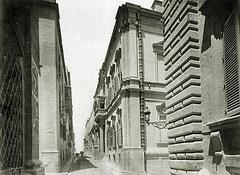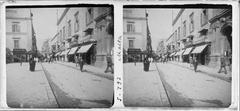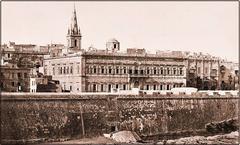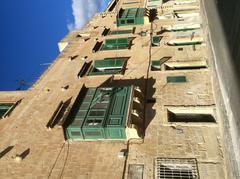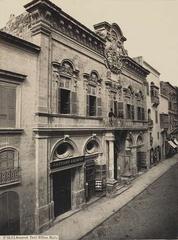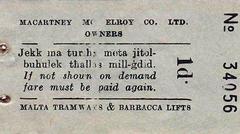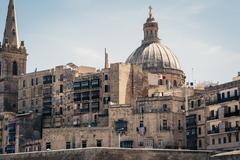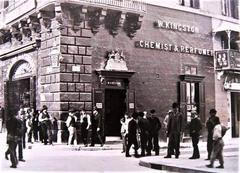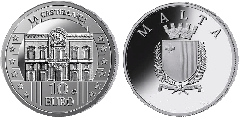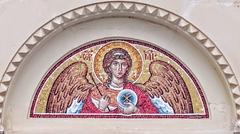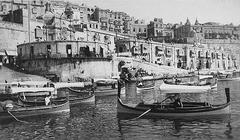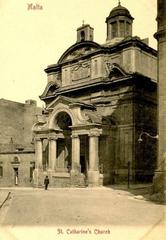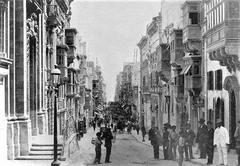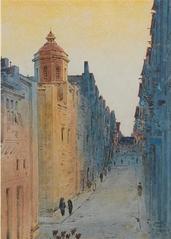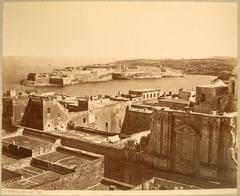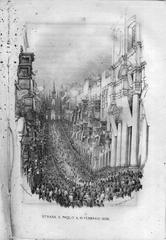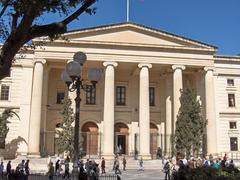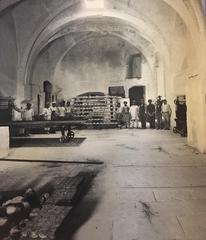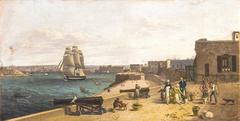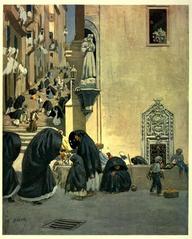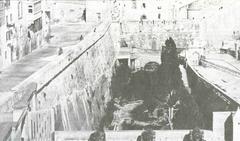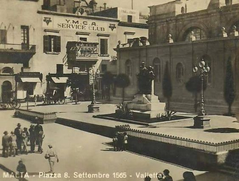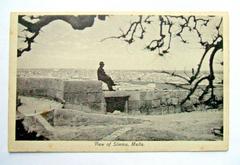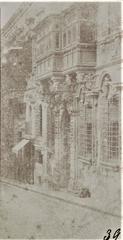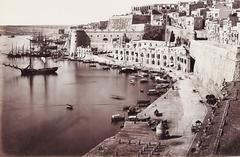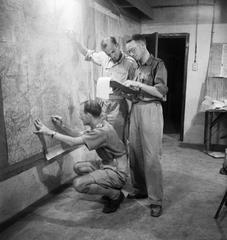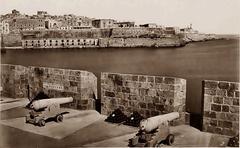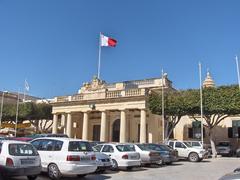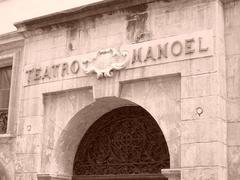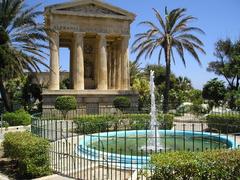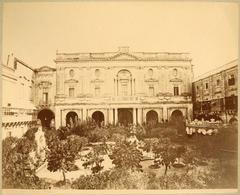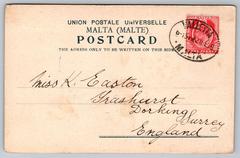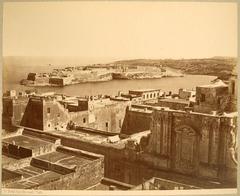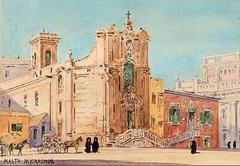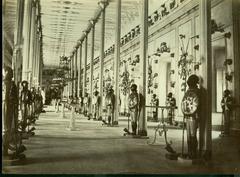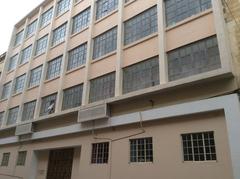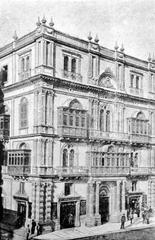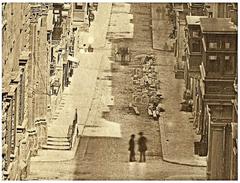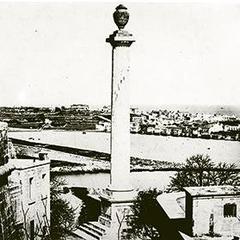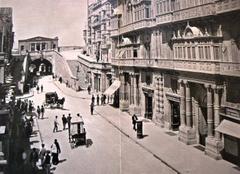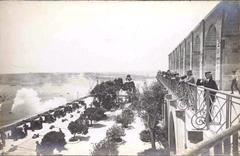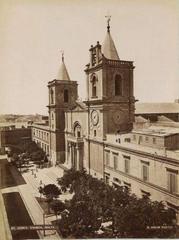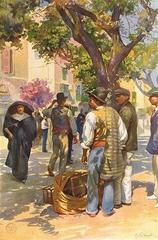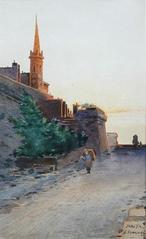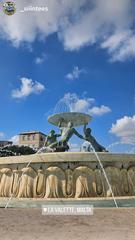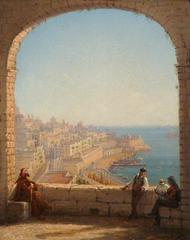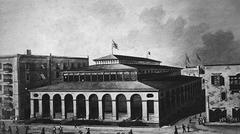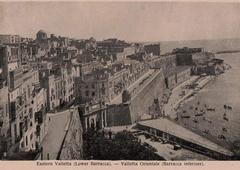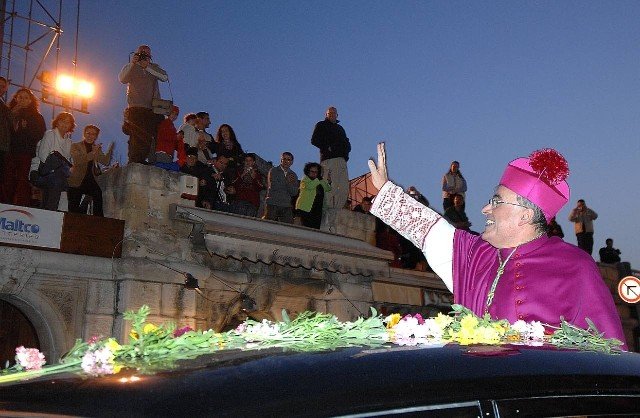
Royal Opera House Valletta: Visiting Hours, Tickets, and Travel Guide
Date: 14/06/2025
Introduction
Located at the entrance of Malta’s UNESCO-listed capital, the Royal Opera House Valletta—locally known as Pjazza Teatru Rjal—is one of the island’s most significant cultural and architectural landmarks. Originally conceived as a neoclassical masterpiece in the 19th century, the theatre has witnessed triumph, tragedy, and transformation. Today, its evocative ruins and innovative open-air performance space attract visitors from around the world, offering a compelling blend of history, artistry, and urban regeneration.
This comprehensive guide explores the Opera House’s layered history, architectural evolution, visitor information, ticketing details, and practical tips. Whether you are a history lover, culture enthusiast, or a traveler keen to experience Valletta’s vibrant arts scene, this resource will help you plan a memorable visit (GuideMeMalta, GHRC, Travelling King).
Contents
- History and Architectural Evolution
- Destruction and Post-war Ruins
- Rebirth as Pjazza Teatru Rjal
- Visitor Information: Hours, Tickets, and Accessibility
- Travel Tips and Nearby Attractions
- Cultural Significance and Community Impact
- Frequently Asked Questions (FAQ)
- Summary and Final Tips
- Sources and Official Links
History and Architectural Evolution
Neoclassical Origins (1862–1866)
Commissioned during the British colonial era and designed by English architect Edward Middleton Barry, the original Royal Opera House was constructed between 1862 and 1866 on the site of the Auberge d’Angleterre. Barry’s grand neoclassical design featured a stately portico with Corinthian columns, a symmetrical façade, and lavish stonework that harmonized with Valletta’s baroque skyline. The auditorium, with a capacity of over 1,000, boasted tiered seating, private boxes, and a richly decorated proscenium arch (GuideMeMalta, GHRC).
Cultural Zenith
Inaugurated in October 1866 with Bellini’s “I Puritani,” the Opera House quickly became Malta’s premier venue for opera, theatre, and concerts. It attracted international stars and a diverse local audience, becoming a focal point of the island’s social and artistic life (GuideMeMalta).
Fire and Restoration (1873–1877)
A devastating fire in 1873 severely damaged the theatre’s interior. Restoration work, completed by 1877, preserved the neoclassical exterior while modernizing the interior, allowing the venue to continue its cultural mission (GHRC).
Destruction and Post-war Ruins
World War II Bombing
The Opera House suffered catastrophic damage during a German air raid on April 7, 1942. The bombing left only fragments of the colonnades and foundation, with the auditorium reduced to rubble (GuideMeMalta). For decades, the ruins stood as a stark reminder of Malta’s wartime suffering.
Debates and Inaction
Multiple reconstruction proposals emerged in the post-war era, but financial, political, and design disagreements led to years of inaction. For much of the late 20th century, the site was used as a car park or makeshift venue, symbolizing both loss and resilience (Academia.edu).
Rebirth as Pjazza Teatru Rjal
Renzo Piano’s Vision (2013)
As part of Valletta’s major city gate redevelopment, the Maltese government commissioned renowned architect Renzo Piano to reimagine the site. Piano’s approach embraced the concept of “living ruins,” preserving the historic colonnades and integrating a minimalist open-air theatre. The new Pjazza Teatru Rjal opened in 2013, seating around 900 and equipped with state-of-the-art lighting and acoustics (GHRC).
- Open-Air Auditorium: Performances take place under the Maltese sky, blending historic memory with contemporary experience.
- Preserved Ruins: Original remnants frame the venue, serving as both backdrop and heritage monument.
- Modern Elements: Steel, timber, and glass contrast with limestone, creating a dialogue between past and present.
- Accessibility: Ramps and accessible seating ensure inclusivity for all visitors.
- Urban Integration: The opera house’s revival complements nearby landmarks like the Parliament House, also by Renzo Piano.
Visitor Information: Hours, Tickets, and Accessibility
Visiting Hours
- General Access: When no events are scheduled, the site is open for free exploration during daylight hours (typically Tuesday–Sunday, 9:00 AM–6:00 PM; hours may vary during events or holidays).
- Performance Times: Events usually occur in the evenings. Always check the official Pjazza Teatru Rjal website or local event calendars for the latest schedules (Trek Zone).
Tickets
- Free Entry: Daytime exploration of the site is often free when no performances are scheduled.
- Event Tickets: Required for concerts, theatre productions, and festivals. Prices typically range from €10 to €50, depending on the event. Tickets can be purchased online, at the box office, or via official partners (TripHobo).
- Guided Tours: Available periodically; booking ahead is recommended.
Accessibility
- The venue is wheelchair accessible, with ramps and suitable pathways. Accessible restrooms and seating areas are provided. Visitors with specific needs should contact the venue in advance.
Travel Tips and Nearby Attractions
Getting There
- By Foot: Located at the entrance of Valletta, the site is easily reached from most city center locations.
- By Public Transport: Most bus routes to Valletta stop at City Gate, just steps from the venue.
- By Car: Parking is limited within Valletta; consider parking outside the city and walking in (Trek Zone).
Nearby Attractions
- St. John’s Co-Cathedral: Renowned for its baroque interior and Caravaggio paintings.
- Upper Barrakka Gardens: Offers panoramic views of the Grand Harbour.
- The Grandmaster’s Palace: A historic seat of power.
- Manoel Theatre: One of Europe’s oldest working theatres.
- National Museum of Archaeology: Showcases Maltese prehistory and culture.
Best Time to Visit
- Spring and Autumn: Pleasant weather and fewer crowds make these seasons ideal.
- Evenings: Attend a performance to experience the venue’s magical atmosphere under the night sky.
- Festival Periods: Look out for events like the Malta Jazz Festival and Valletta International Arts Festival (Malta.com).
Cultural Significance and Community Impact
The Royal Opera House’s history reflects Malta’s resilience and capacity for renewal. Its transformation into Pjazza Teatru Rjal serves as a living memorial, fostering artistic innovation and community engagement. The venue hosts diverse performances, nurturing local talent and attracting international acts. It also plays a role in job creation and urban revitalization, supported by organizations like the European Investment Bank (EIB.org).
Architecturally, the Opera House is a striking example of adaptive reuse—where ruins are not erased, but celebrated as part of the city’s living story (Academia.edu). The integration with Valletta’s broader cultural ecosystem and participation in city-wide events further enhance its role in Malta’s identity and tourism economy (Travelling King).
Frequently Asked Questions (FAQ)
Q: What are the Royal Opera House Valletta visiting hours?
A: General access is typically from 9:00 AM to 6:00 PM Tuesday–Sunday when no events are scheduled. Performance times vary—consult the official website for details.
Q: Do I need a ticket to visit the Royal Opera House Valletta?
A: Entry is free when no performances are scheduled. Tickets are required for events and can be purchased online or at the box office.
Q: Is the venue wheelchair accessible?
A: Yes. Ramps, accessible seating, and restrooms are available.
Q: Are guided tours offered?
A: Guided tours are offered periodically; check with local tour companies or the venue and book in advance.
Q: Which attractions are nearby?
A: St. John’s Co-Cathedral, Upper Barrakka Gardens, Grandmaster’s Palace, and the National Museum of Archaeology.
Q: How do I get there?
A: The site is easily accessible on foot from central Valletta or by public bus to City Gate.
Q: Can I visit in bad weather?
A: The open-air theatre may close during inclement weather. Check forecasts and confirm with the venue for event updates.
Tips for a Memorable Visit
- Book ahead: For popular performances, buy tickets in advance through the official website.
- Arrive early: Especially for evening events to secure good seating and enjoy the atmosphere.
- Combine sites: Plan to visit other Valletta historical sites nearby for a full cultural experience.
- Dress accordingly: Bring a jacket for cool evenings.
- Check the calendar: Look for special festivals and events during your stay (World of Malta).
Summary and Final Tips
The Royal Opera House Valletta’s story—marked by grandeur, destruction, endurance, and renewal—is woven into the fabric of Malta’s capital. Its transformation into the open-air Pjazza Teatru Rjal honors both memory and innovation, offering visitors a powerful cultural and architectural experience. With its central location, accessibility, and lively program of events, the venue is a must-visit for anyone seeking to understand Malta’s historical and contemporary spirit.
Plan your visit by checking current opening hours, booking tickets early for high-demand events, and exploring the surrounding historic sites. For the latest information, download the Audiala app or consult official resources. Whether attending a performance or simply exploring the evocative ruins, the Royal Opera House Valletta is sure to inspire.
Sources and Official Links for Further Information
- GuideMeMalta: Discover Valletta’s Iconic Royal Opera House
- GHRC: The Royal Opera House / Pjazza Teatru Rjal
- Travelling King: Ultimate Travel Guide to Valletta
- Trek Zone: Royal Opera House Valletta Visiting Hours & Info
- Academia.edu: The Royal Opera House in Malta: From Ruin Towards a New Reality
- European Investment Bank: Malta Royal Opera House
- EAA: Royal Opera House Valletta Malta
- Wikipedia: Royal Opera House, Valletta
- TripHobo: Royal Opera House Valletta Guide
- World of Malta: Valletta Early Opera Festival
- Malta.com: June Events in Valletta

